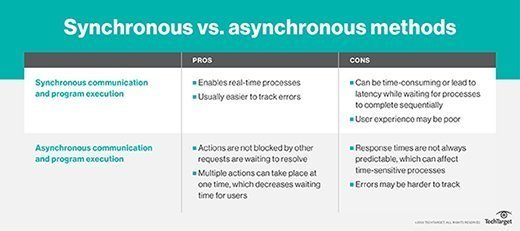What is a USART (universal synchronous/asynchronous receiver/transmitter)?
A USART (universal synchronous/asynchronous receiver/transmitter) is hardware that enables a device to communicate using serial protocols. It can function in a slower asynchronous mode, like a universal asynchronous receiver/transmitter (UART), or in a faster synchronous mode with a clock signal. USARTs are no longer common in consumer PCs but are still used in industrial equipment and embedded systems.
USART vs. UART
A UART device can use asynchronous communication protocols. A USART device can use both asynchronous and synchronous communication protocols. Therefore, a USART can do anything a UART can do and more. Because a USART requires more complex circuitry and more communication lines to fully implement, many devices may only implement a UART to save on cost, complexity or power usage.
Asynchronous and synchronous serial communication
In serial communication, each bit of data is sent one at a time on a transmit wire. This is a serial communications interface. If the sender and the receiver don’t agree on how the data is sent, such as the order and length of time of each bit, then the data becomes garbled, and they won’t understand each other. Asynchronous and synchronous are two different ways to standardize how serial data is sent.
Asynchronous serial data
In asynchronous mode, only one data line is used to send data from the transmitter to the receiver. There is no shared synchronization signal from the sender to the receiver. So, the receiver has no way to know how fast or slow the data is coming. To circumvent this, both the sender and receiver must be manually configured beforehand to use the same data rate. A common shared baud rate is 9,600 bits per second.
Even sharing a common bit rate, it is possible for the devices to become slightly out of sync. Therefore, extra bits are added to each packet of data to ensure reliable transmission. A start and stop bit are almost always added to indicate each packet. Often, a parity bit is also added to indicate small errors. Adding these extra bits causes asynchronous communication to be less efficient.
The following are some example asynchronous serial protocols:

Synchronous serial data
In synchronous mode, a data and a clock line are used to send the data. The controller sends a clock signal, which synchronizes the controller and the peripheral at the same data rate. Because the clock signal keeps the devices in sync, the two devices don’t need to be configured ahead of time to use the same bit rate.
Using a clock signal also removes the need to have extra start and stop bits. All the data can be sent continuously without pause. It also enables much faster bit rates as the sender doesn’t need to worry about the receiver being able to keep up or get out of sync.
The following are some example synchronous protocols:
- SEO Powered Content & PR Distribution. Get Amplified Today.
- Platoblockchain. Web3 Metaverse Intelligence. Knowledge Amplified. Access Here.
- Source: https://www.techtarget.com/whatis/definition/USART-Universal-Synchronous-Asynchronous-Receiver-Transmitter
- 1
- 9
- a
- Able
- About
- added
- ahead
- All
- always
- and
- because
- become
- becomes
- being
- Bit
- causes
- Clock
- coming
- Common
- communicate
- Communication
- Communications
- complex
- complexity
- consumer
- controller
- Cost
- data
- device
- Devices
- different
- each
- efficient
- enables
- ensure
- equipment
- Errors
- example
- extra
- FAST
- faster
- following
- from
- fully
- function
- get
- How
- HTTPS
- ICON
- implement
- in
- indicate
- industrial
- industrial equipment
- IT
- Keep
- Know
- Length
- Line
- lines
- longer
- manually
- many
- methods
- Mode
- more
- Need
- ONE
- order
- Other
- PCs
- Pictures
- plato
- Plato Data Intelligence
- PlatoData
- possible
- power
- protocols
- Rate
- Rates
- reliable
- requires
- same
- Save
- serial
- shared
- sharing
- Signal
- slow
- small
- So
- some
- start
- Still
- Stop
- such
- sync.
- synchronization
- The
- therefore
- time
- to
- transmit
- understand
- Universal
- Usage
- use
- ways
- which
- Wire
- without
- Won
- zephyrnet










